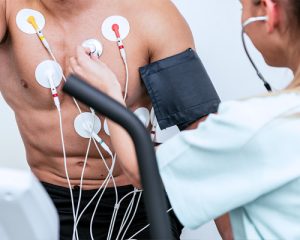 Cancer remains one of the leading causes of morbidity and mortality worldwide, particularly among adults over the age of 40. As our bodies age, the risk of developing cancer increases, making preventative measures crucial for maintaining health and well-being. This article provides an in-depth exploration of effective cancer prevention methods tailored for adults in this age group. We will discuss risk factors, prevention strategies, recommended screening guidelines, and actionable steps based on current clinical studies and epidemiological data.
Cancer remains one of the leading causes of morbidity and mortality worldwide, particularly among adults over the age of 40. As our bodies age, the risk of developing cancer increases, making preventative measures crucial for maintaining health and well-being. This article provides an in-depth exploration of effective cancer prevention methods tailored for adults in this age group. We will discuss risk factors, prevention strategies, recommended screening guidelines, and actionable steps based on current clinical studies and epidemiological data.
Identifying and understanding the risk factors associated with cancer can empower individuals to take proactive measures. The most common risk factors include:
Implementing lifestyle changes and preventive measures can significantly reduce the risk of cancer. Key strategies include:
A diet rich in fruits, vegetables, whole grains, and lean proteins can protect against cancer. According to a study published in the Journal of the American Dietetic Association, diets high in antioxidants and phytochemicals can reduce cancer risk. Key recommendations include:
Physical activity is a proven preventive measure against cancer. The American Cancer Society recommends at least 150 minutes of moderate exercise or 75 minutes of vigorous exercise each week. Exercise helps maintain a healthy weight, boosts the immune system, and improves overall health.
Quitting smoking has immediate and long-term benefits. Research indicates that former smokers have a significantly lower risk of developing lung cancer compared to those who continue to smoke. Various resources, such as quitlines and smoking cessation programs, are available to assist individuals in quitting.
Reducing alcohol consumption can significantly lower cancer risk. The WHO recommends limiting alcohol intake to no more than two drinks per day for men and one drink per day for women. This can reduce the risk of several alcohol-related cancers.
To achieve a healthy weight, it is essential to balance calorie intake with physical activity. The Centers for Disease Control and Prevention (CDC) emphasizes that a combination of healthy eating and regular exercise is key to preventing obesity-related cancers.
Regular screenings are critical for early detection of cancer, especially for adults over 40. The following guidelines provide a framework for cancer screenings:
Women should begin annual mammograms at age 40, or earlier if there is a family history of breast cancer. The U.S. Preventive Services Task Force (USPSTF) suggests clinical breast exams as part of routine care.
Individuals aged 45 and older should undergo colorectal cancer screening. The USPSTF recommends various methods, including colonoscopy every 10 years or stool-based tests annually, depending on risk factors.
Women should begin cervical cancer screening at age 21. Those aged 30 to 65 should have a Pap test combined with HPV testing every five years, or a Pap test alone every three years.
Men should discuss the potential risks and benefits of prostate cancer screening with their healthcare provider starting at age 50, or age 45 for those at higher risk.
Annual low-dose CT screening is recommended for high-risk individuals aged 50 to 80 years who have a history of heavy smoking.
 Cancer prevention is a multifaceted approach that involves understanding risk factors, embracing healthy lifestyle choices, and adhering to recommended screening guidelines. Adults over 40 can significantly reduce their cancer risk through proactive measures and early detection strategies. By making informed health decisions and collaborating with healthcare providers, individuals can contribute to their long-term health and well-being.
Cancer prevention is a multifaceted approach that involves understanding risk factors, embracing healthy lifestyle choices, and adhering to recommended screening guidelines. Adults over 40 can significantly reduce their cancer risk through proactive measures and early detection strategies. By making informed health decisions and collaborating with healthcare providers, individuals can contribute to their long-term health and well-being.